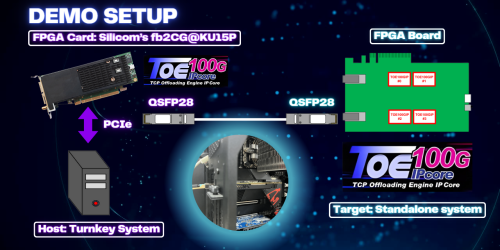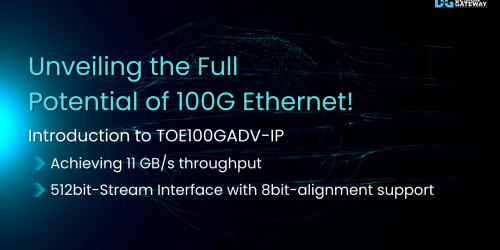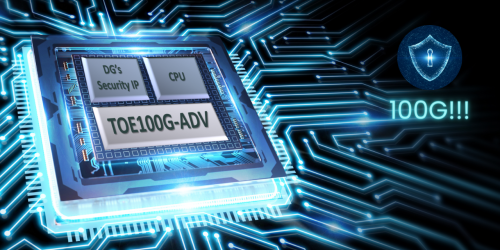Ultra-Low Latency 25GEMAC/PCS + RS-FEC IP Core Demo on Xilinx UltraScale+ FPGA
Experience the power of the 25G EMAC/PCS + RS-FEC IP Core through our loopback demo on the Xilinx UltraScale+ FPGA board.
This article showcases the IP’s capabilities and features, along with a detailed hardware setup and example console for running the demo. Discover the potential of this impressive IP as we explore the reference design and its loopback function. With options for internal and external loopback modes, packet generation, verification, and latency measurement.
Download the free bit file from our website and follow the setup instructions to get started. Get started and unlock the potential of our cutting-edge IP core today!
The 25G EMAC/PCS + RS-FEC IP
We bring you a demo of our reference design utilizing this IP. This demo will showcase the capabilities and features of our IP, as well as provide you with a detailed hardware setup and an example console for running the demo.
Let’s begin to explore the potential of this powerful IP core.

The reference design for our loopback demo
This design aims to provide a simple yet comprehensive demonstration of the capabilities of our IP.
The 25G EMAC/PCS + RS-FEC IP is connected to the Xilinx Transceiver, which enables the physical and medium of the 25G Ethernet system.
In the loopback demo, the Tx signal is connected to the Rx signal, allowing for the IP to operate in a loopback function.
Users have the option to choose between two loopback modes: internal loopback via transceiver configuration or external loopback via an SFP28 loopback module.
For packet generation and verification, the test logic is connected to the user interface of the 25G EMAC/PCS + RS-FEC IP.
The test logic allows users to generate a packet and then receive and verify the returned packet while also measuring the latency time.
The round-trip latency time is the time taken from the start of the transmitted packet to the start of the received packet.
We’re showcasing the demo running on the Xilinx KCU116 evaluation board. If you’re interested in trying out the demo for yourself, the bit file is available for free on our website.
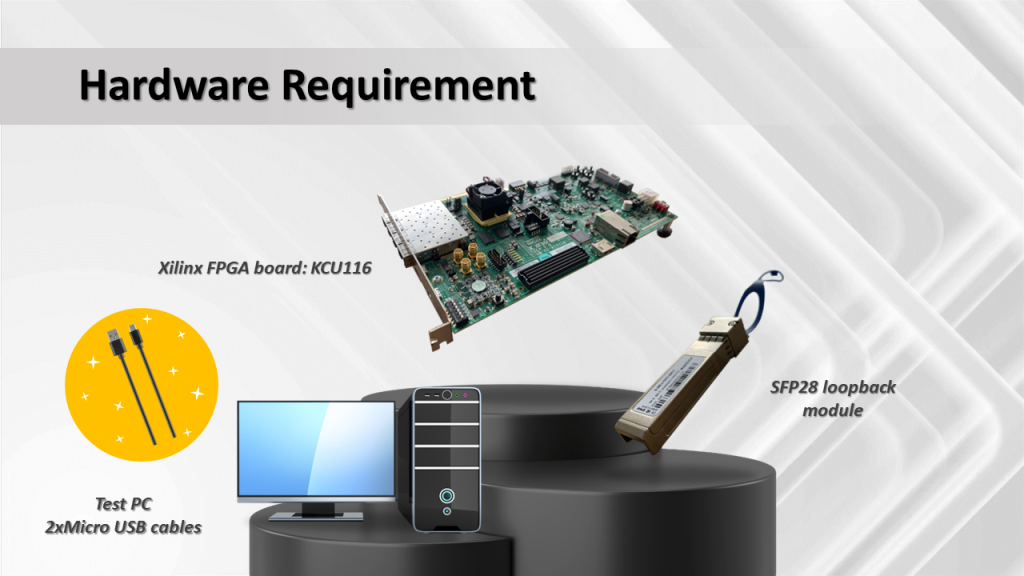
To run this demo, you will need four hardware components.
Firstly, a Xilinx FPGA board and its accessories, such as a power adapter. In this article, we’ll be using the KCU116 board.
Secondly, if you choose to use external loopback mode, you will need an SFP28 loopback module.
However, if you choose internal loopback, no additional hardware is required.
Lastly, you will need a Test PC and two micro USB cables to connect the PC to the FPGA board.
These cables are used for FPGA configuration and connecting to the test console.
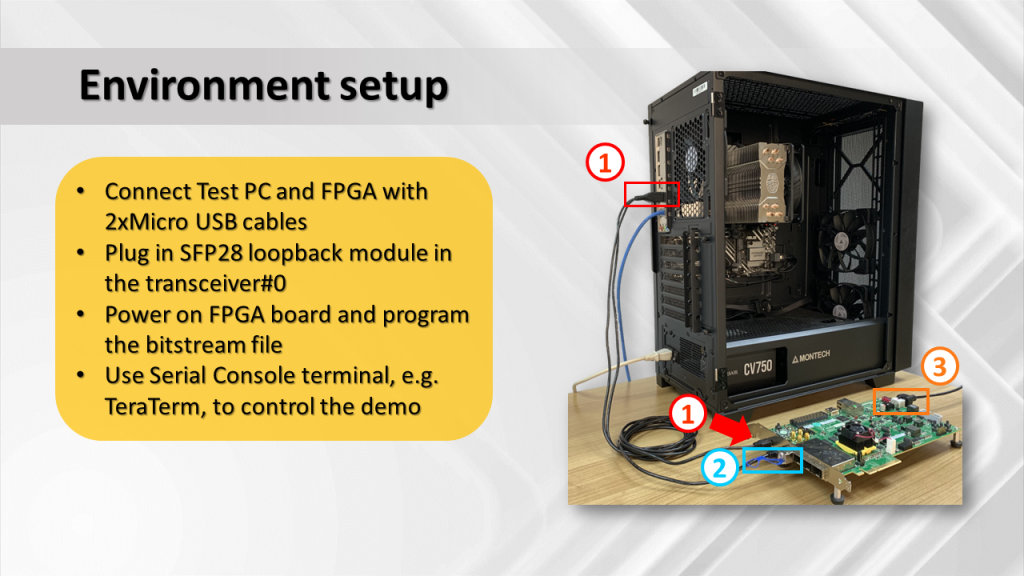
To set up the test environment, there are four steps.
Firstly, connect the FPGA board and the Test PC using the two micro USB cables.
Secondly, if you’re using external loopback mode, insert the SFP28 loopback module into transceiver channel#0 on the FPGA board.
Thirdly, power on the FPGA board and program the bitstream file that’s available for free download on our website.
Finally, open a Serial Console terminal, such as TeraTerm, to control the demo.
We’ve provided more detailed instructions in a document that you can download from our website. It outlines all the necessary steps required to get the demo up and running.
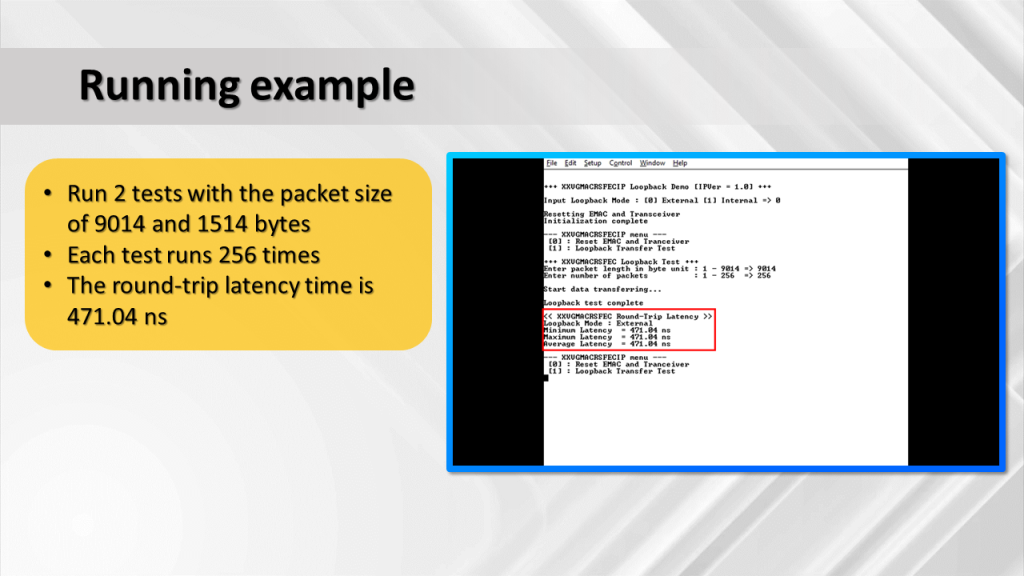
After completing the setup and starting the demo, a welcome message will appear on the console, and you can begin testing the demo.
The demo selects external loopback mode, so an SFP loopback module must be inserted.
The first test is performed by setting the packet size to 9014 bytes and the number of packets to 256.
After the test is complete, the summary of latency time is displayed, showing the minimum, maximum, and average values.
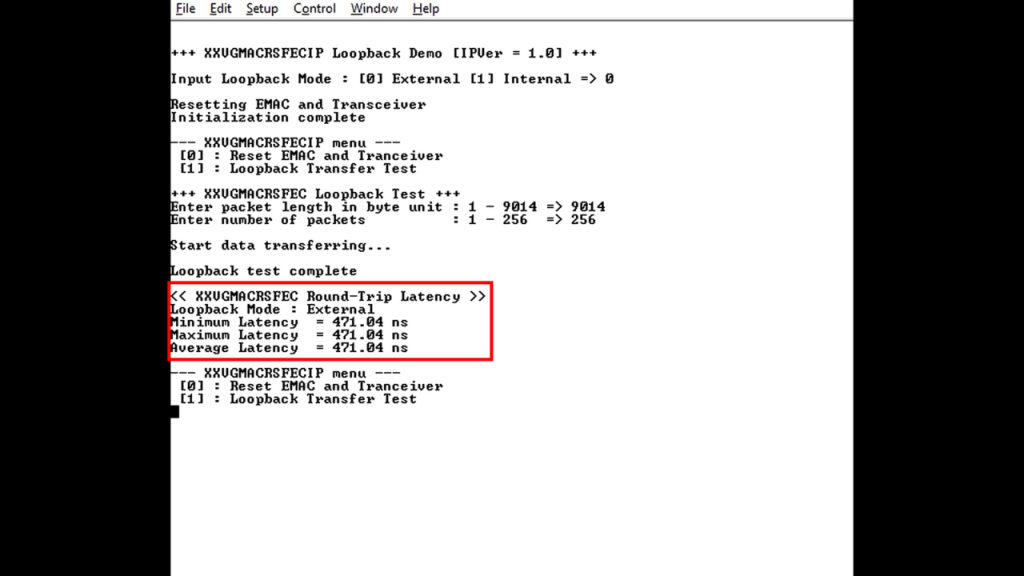
In the test, all three values are the same, at 471.04 ns.

For the second test, we change the packet size to 1514 bytes, which is a non-jumbo frame size.
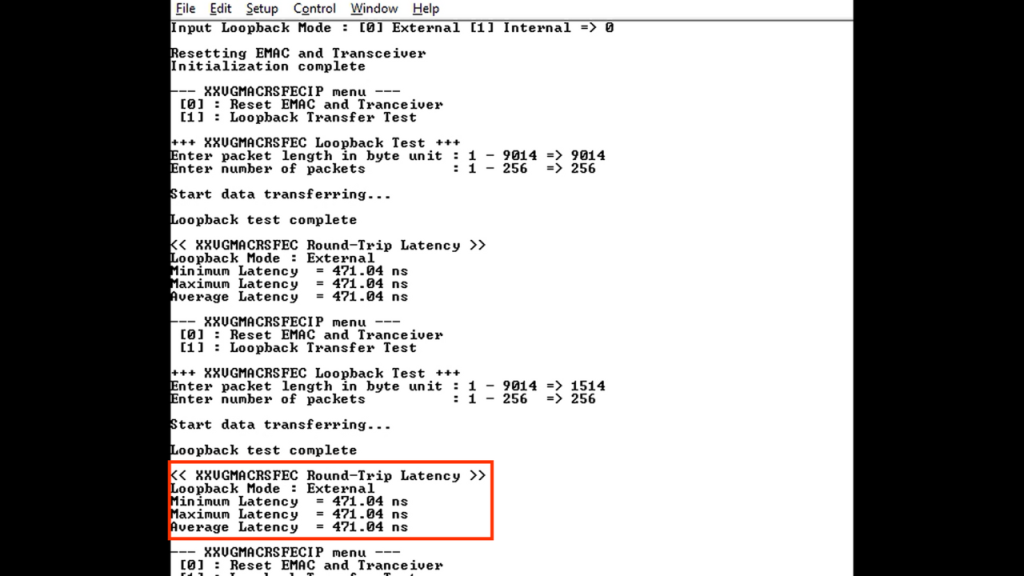
The latency time results are the same as in the first test.
We hope you found this demonstration informative and useful.
If you have any questions or would like more information about the IP or our services, please don’t hesitate to reach out to us. https://dgway.com/index_E.html
Article about 25G Ethernet MAC IP


